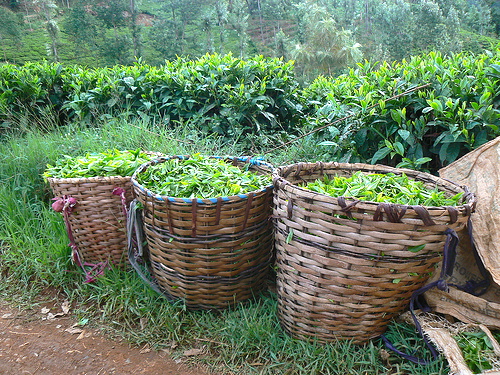 Loading... Please wait...
Loading... Please wait...
- Home
- Two Minute Tea Class
- Green Teas & White Teas
Green Teas & White Teas
Posted by Tea by G on 12th Nov 2015

Green Teas:
Home to China, Japan, Korea and Taiwan, green tea is considered ‘un-oxidized’ tea, and is only slightly more processed than white tea.
The picked leaf is still allowed to wither in the sun, or on drying racks, so as to lose some of its moisture content. In Japan and Korea, the leaves are then ‘steamed’ to arrest oxidation, while in China, the leaves are ‘pan-fired’ to arrest oxidation. These two different methods of arresting oxidation are what gives Japanese tea its grassy, vegetal taste, and Chinese tea its smokier, toasted notes.
After steaming or pan-firing, the leaves are ready to be rolled, shaped and dried over and over until the desired shape is attained for that particular region and tea garden. Leaves in Japan are mostly mechanically harvested, and the leaves are generally left in a straight, needle shape. Tea from China is mostly hand plucked and turned into various shapes ranging from rolled (Gunpowder), a tiny flattened bud pluck known as ‘bird’s beak’ or ‘sparrows tongue’ (Dragon Well), a twisted needle (Gyokuro) or a beautiful pearl (Jasmine Pearls). There are many more shapes, and it is important to note, the Chinese take their tea shapes very seriously. The skill to make these artisanal teas are passed down generation to generation. Most Chinese teas come with a legend attached to the region.
A most interesting and delicious green tea is Genmaicha. From Japan, this needle leaf tea is mixed with roasted brown rice, some of which are popped. The roasted brown rice imparts a toasted, nutty flavour and is a pleasure in the cup.
White Teas:
Home to China’s Fujian Province, the juicy fat buds covered in soft downy white fuzz, giving it a silvery appearance, and picked before they start to open, are comparable to none!
Other tea producing countries and regions of China are producing ‘Silver Needle’ tea, and although they come very close, they do not hold a torch to the smooth, sweet, delicate flavour of teas produced within the Fujian Province.
Minimally processed fresh hand-picked buds, or a ‘bud and two leaves’, as found in Bai Mudan (White Peony) are left out in the sun or indoors on drying racks to wither. The buds (and leaves) are then slowly dried in order to preserve the ‘silver’ hairs and shape of the bud.
Bai Mudan (White Peony), is more of a modern tea, made using the bud and first two leaves. This type of pluck was introduced to offset the high cost of the ‘fine plucking’ just the bud for Silver Needle tea. Bai Mudan yields a slightly darker liquor and taste – however, this tea is still very light. White tea is excellent served with fruit, or dessert.
